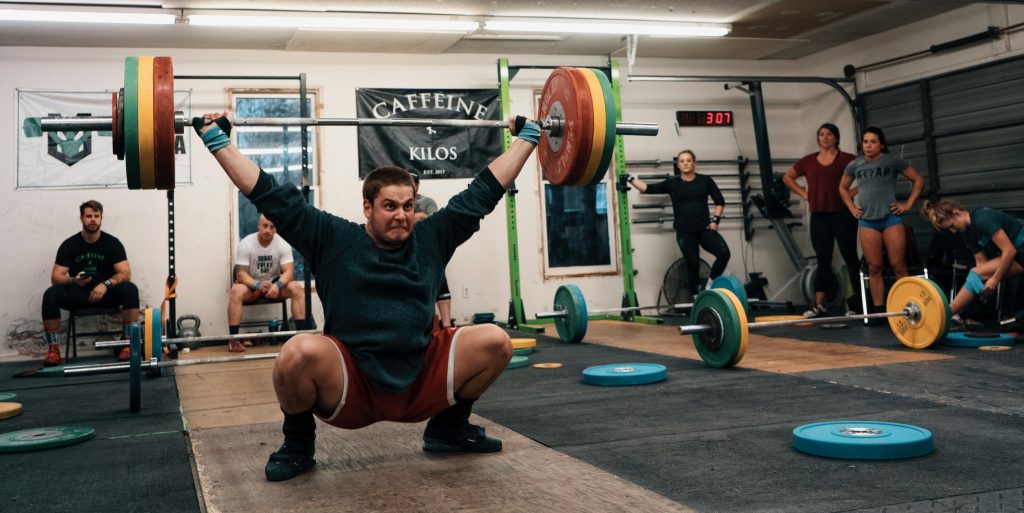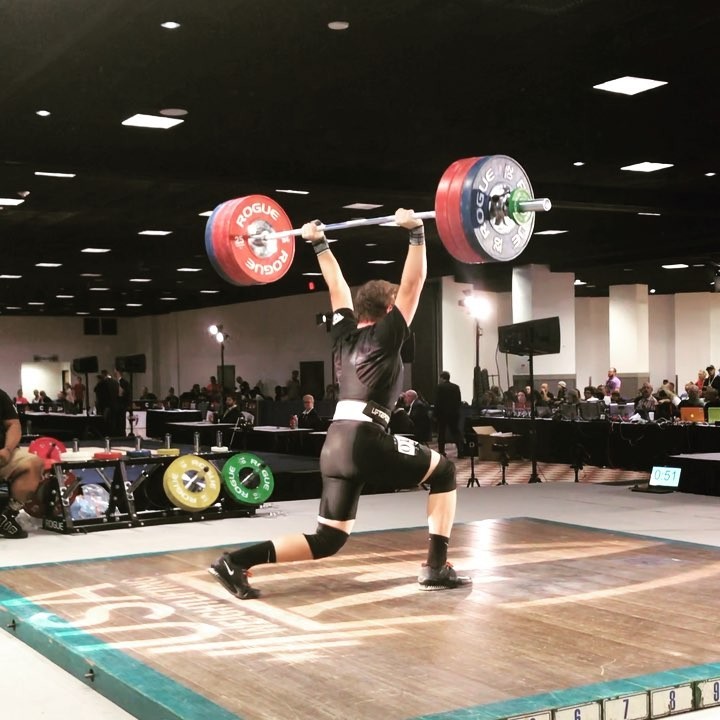The Mash Mafia recently traveled to Lima, Peru for the 2019 Pan American Games. One of the best parts of the trip is hanging out with three-time gold medalist Pyrros Dimas.
THE BULGARIAN SYSTEM
On the trip, I got Pyrros talking about what really happened in the Bulgarian System. After he spent the better part of an hour explaining, now I understand how the program worked. For such a simple program, there are a lot of rumors and false information. The purpose of this article is to clarify what it means to truly train in a Bulgarian system.

There’s something to make note of first, which is Pyrros spent nine years in a Russian system before taking on a Bulgarian program. That means he had a massive base to work from. His entire body was strong. His work capacity was through the roof, and his technique was perfected. At that point, I 100% agree that specificity, frequency, and intensity are going to rule. It only makes sense.
The problem is when young American kids skip all the base work, train once per week, max out with crappy form all the time, and tell everyone they are lifting Bulgarian. No, you’re just being a dumb American boy.
Let’s look at the program, and then I will explain more in detail:
SAMPLE PROGRAM
Monday, Wednesday, Friday:
Session One – 8 am
Back Squat: 1RM
Snatch: work up to 85% of 1RM for 1
Clean and Jerk: work up to 85% of 1RM for 1
Front Squat: 1RM
Session Two – 4 pm
Snatch: 1RM
Clean and Jerk: 1RM
Front Squat: 1RM
Session Three – 7 pm
Snatch: 1RM
Back Squat: 1RM
Tuesday, Thursday, Saturday
Session One – 8 am
Back Squat: 1RM
Power Snatch: 1RM
Power Clean and Jerk: 1RM
Front Squat: 1RM
Session Two – 4 pm
Snatch: 1RM
Clean and Jerk: 1RM
Front Squat: 1RM
Sunday
Only One Session
Snatch: 1RM
Clean and Jerk: 1RM
Back Squat: 1RM
IMPORTANT NOTES
Let’s now go over a few of the notes I took while Pyrros talked:
1. Limit the misses – If you miss, you wave back down and work up again. If you miss again, you wave down, make a nice lift, and stop for the day. This is key, or consistency will be out the door. Plus if an athlete has an episode of five or more misses, it ruins them for the rest of the week. Discipline is key, and that’s what is lacking in more Americans. You absolutely need a coach to tell you “no more.”
2. Pyrros added in specific accessory work – He completed very specific accessory work to target weaknesses and to correct movement flaws. He also skipped the last squat on the days of three practices and practiced his jerk. The key is making the accessories very specific to the individual. You wouldn’t want to add in unnecessary work on a program like this one. Remember this plan should be reserved for athletes who have been training for at least eight years, have perfect technique, and have a massive work capacity built up.
3. Use drills and accessories as warm ups as well – Pyrros would use certain drills as warm ups to target flaws. For example, warm up with snatch (paused at knee) plus snatch, or push press to overhead squat to warm up for snatch. You could perform press from split to warm up for clean and jerk.
4. Auto-Regulation (Max of the day) – This is the key to this program. You can’t expect to PR everyday. That’s unrealistic. The goal is simply to work up to a max of the day. Sometimes that’s 90%, sometimes 95%, sometimes 98%, and sometimes 101%. Focus on the process and perfecting the movement. Eventually, the athlete will get to a point of using the same warm ups and picking the same attempts. At that point, the competition is just another training day.
Of all my athletes, 15-year-old Morgan McCullough is the best at auto-regulation. I think it comes naturally because his mother, Crystal, is good at the same thing. Ryan Grimsland, my outrageous 17-year-old, is getting better at this process – which is leading to him peaking when it counts. This brings up a point of getting your athletes early, but I will discuss that later in the article.
5. Pyrros was given three months per year off of the program – This is a big one. He would take November, December, and January off from the Bulgarian Program. At that time he would continue training, but with a more Russian approach. During this phase he could focus on hypertrophy and let his joints rest a bit away from all of the absolute strength. It’s during blocks like this I have witnessed Nathan Damron experience the most gains. Basically he would spend a few months focusing on high repetitions and volume with some basic bodybuilding, and then shift back to a more high frequency and high intensity program. Every time he was able to do this, I witnessed him rack up PR after PR.
[thrive_leads id=’9711′]
6. Recovery is a must – Pyrros would partake in two saunas per week and two massages from a sports medicine specialist (lots of soft tissue work) per week. This goes for any athlete in any program who is trying to push their body to an Olympic level. This is a part of training most athletes skip.
7. Nutrition must be in alignment with your training – Pyrros would eat two steaks every morning before eating breakfast. The calories have to match an athlete’s training volume – that’s simply a fact of training. If you don’t want to take responsibility with your nutrition, then don’t tell me you want to be an Olympian. Pyrros took responsibility for each section of his life, and it paid off with three gold medals.

COACHES AND ATHLETES
Now I want to address all of the coaches and athletes who are reading this. I am sure a few of you are like, “Heck yes, I want to train like a Bulgarian.” You will try the program, possibly hit a few PRs, and then you will break and never train again. I know of two Americans who were great, but the program broke them. You have to have a massive base.
I am at an advantage with my young athletes like Morgan and Ryan. They have been training for several years already. Right now we are in a phase to perfect their technique. I am addressing each detail of each of their lifts. We are slowly adding more volume, and soon we will add more sessions. However, it’s a process. It’s crazy to go from one session four times per week to training like a Bulgarian. Instead, you could take things like this:
1. First three years of training (starting at age 9) – Start with one session per day at three times per week, and by the end of year three have things ramped to five days per week. The focus is perfect technique, absolute strength in the major accessory movements (squat, pulls, presses, and rows), hypertrophy in the muscles that will help with weightlifting (quads, hamstrings, glutes, spinal extensors, lats, traps, shoulders, and triceps), GPP (gymnastics, relative strength, sprinting, jumping, flexibility, and agility), and work capacity. Work capacity is something that will always be a focus, and it’s something that should always be tracked. You still want to compete during these years with the focus being on making lots of lifts. You want to get your athlete used to making lifts.
2. Years three through six (ages 12-15) – Now the focus shifts to perfecting the competition movements, and the process of pushing those numbers begins – yet slowly. The GPP will slowly start to transfer to SPP (special physical preparation). Basically things get a bit more specific. Remember these athletes are still young, so keep things fun with games and competition. Jump competitions are always fun both vertical and broad jump. On a side note, don’t try to coach like a Bulgarian or Russian coach. We are Americans coaching American kids, so remember that. I want my kids smiling and laughing.
During this phase, you can push things to six days per week and maybe a couple of two-a-days for technique only (though it will also get them used to the extra sessions). Competitions will get a bit more serious. Morgan is 15, and he’s already competed at three international events – earning medals at each one of them. This is the stage they get used to competing against the best in the world, and hopefully they get used to winning like Ryan and Morgan.
3. Years six through eight (ages 16-18) – This is where it gets debatable, but in my observation this is a great time to push it a bit. Their endocrine systems are through the roof, and most athletes are done growing at this point. I think this is a great time to start pushing the athletes a bit. The goal here would be to take the sessions from 8 to possibly 12 sessions per week. Remember, we are in America, and things are different now. If I see an athlete not handling the volume or frequency, I am not going to make a round knob fit in a square hole. Now their programs will look more like an exact weightlifting program with specificity being the key. Of course there will still be accessory work, core work, and work capacity.
[thrive_leads id=’8207′]
4. Years eight plus (19 years old and on) – They might still be Junior weightlifters, but they are in the big leagues at this point. Their hormones are maxed, and their bodies will never be more primed for improvement. The key is proper development up to this point, disciplined athletes, and a coach who can control the intensity. I’m not sure I would ever get to 16 sessions per week, but it’s at this time I would start increasing frequency. I suggest using your brain – add a session, assess the athlete’s ability to adapt, and then either keep it or ditch it. It’s that easy. I am definitely going to keep a similar schedule for Morgan and Ryan, and possibly some of my other young ones if they continue to develop. I think given the right circumstances, Meredith, Nathan, and Hunter could move to something similar during the next quad.
I wouldn’t use the plan Pyrros laid out exactly, but I would use a lot of the same parameters. I would definitely try to individualize the program for each of my athletes as to maximize their individual genetics. The conversation definitely sparked some ideas, so now it’s time to go home and put pencil to paper or fingers to keyboard in this case.
I hope this article clears up what it means to really train Bulgarian. If you are simply maxing out once per day, you are not training Bulgarian. Really that is being lazy and not maximizing your potential. Anyway, I hope you enjoyed the article.
Amazing note
Thanks!
And… Remember:
Russian system works!
(And bulgarian)
😉